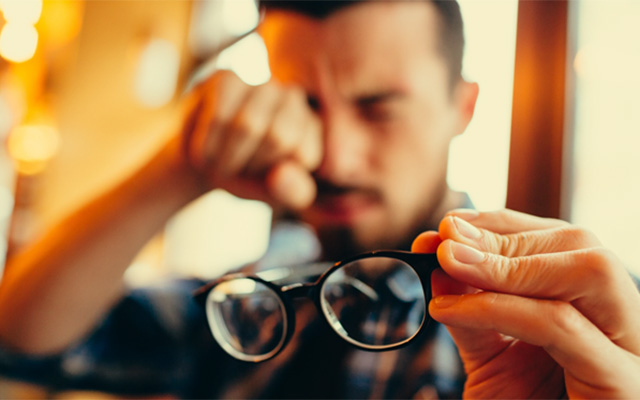Bad eyesight and driving is a potentially dangerous combination. In 2016, uncorrected or defective eyesight contributed to more than 250 people suffering injuries on UK road. So taking care of your vision with regular eyesight tests is an important part of keeping yourself, and others, safe on the roads.

What are the dangers of driving below the legal eyesight standard?
- Observations – poor eyesight means you may miss seeing and reacting to hazards. Official accident statistics show defective eyesight contributed to 70 people being killed or seriously injured in UK roads in 2016. That's why it's so important you meet the legal eyesight standard for driving. Changes to your normal route – any unexpected diversions or disruptions to a route you take all the time – could be missed by a combination of poor eyesight and complacency.
- Impaired ability at night – you don’t want the things which go bump in the night to be you, driving over the neighbours’ bins. Even drivers with great eyesight will find themselves straining harder when driving at night, so if you’ve got already-weak eyesight, you’re making yourself particularly vulnerable. Drivers with defective vision are even more likely to experience blurred vision, dazzle and have difficulty focusing.
- Road surfaces – you might be more likely to miss mud, gravel and other debris on the road, or even potholes.
What is the legal eyesight standard for driving?
The minimum standard is that you must be able to read a standard number plate licence from 20 metres away (or 20.5 metres if it’s an old-style licence plate) - approximately the length of 5 cars.
To meet the minimum eyesight standard for driving you must also have a visual acuity of at least decimal 0.5 (6/12) measured on the Snellen scale (with glasses or contact lenses, if necessary) using both eyes together; or, if you have sight in one eye only, in that eye. You also have to prove you have an adequate field of vision, which your optician can test and tell you more about.
If you're driving a lorry or a bus, the standards are higher. You have to tell the DVLA about any known problems with your eyesight, though you don’t need to let them know if you’re short or long sighted - as long as you always wear your glasses or contact lenses if you need them. If you've had laser eye surgery and now meet the minimum standard, you don't need to inform them.
Other eyesight issues
Do I need to tell the DLVA if I'm colour blind?
No. But common sense tips apply if you're colour blind, or have a form of defective colour vision. You should pay extra attention to traffic lights - remembering that red is the top light, green is the bottom, for example. You should also try to learn what each sign means from the shapes alone if you can't differentiate colours.
What if I have tunnel vision eyesight?
You may still be allowed to drive with tunnel vision, but only after first proving that you have a minimum of 120 degrees vision spanning your central view point. The DVLA will invite you for a field vision test when they're made aware of your tunnel vision.
Can I drive with one eye?
Drivers with complete loss of vision in one eye are legally able to drive on a non-commercial licence, if they've passed the visual fields and visual acuity eyesight tests.
How often should I get an eyesight test?
It's recommended that everyone (driver or not) gets their eyes tested every 2 years. As our eyes degenerate over time, all drivers should be aware of changes to their sight and if they become concerned should arrange an eye test. Once a driver is 70 they must re-apply for their driving licence every 3 years. Although it's not a requirement of the re-application process to have an eyesight test, it can be a good opportunity for older drivers to check their vision still meets the required standard.
What happens if I get caught driving with eyesight below the required standard?
If you’re found to be driving with less than adequate vision, you face up to a £1,000 fine, 3 points on your licence or a potential disqualification from driving. The police can also request to have your licence revoked with immediate effect if they believe you pose a risk to the public.
If you're learning to drive and concerned that your eyesight isn't up to scratch then you should book an eye test before taking any more lessons.
